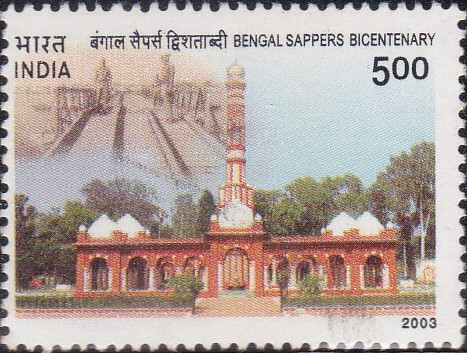
Bengal Sappers
A commemorative postage stamp on the 200 Years of the Bengal Engineer Group (BEG), a regiment of Corps of Engineers in the Indian Army :

 Issued by India
Issued by India
Issued on Nov 7, 2003
Issued for : The year 2003 marks the bicentenary year of the raising of the Regiment and the Department of Posts commemorates this occasion through the issue of a postage stamp that features the legendary Madhumati Bridge.
Credits :
Stamp : Monika Khanna Gulati
FDC : Alka Sharma; Based on material received from the sponsor.
Cancellation : Alka Sharma
Type : Stamp, Mint condition
Colour : Multi Colour
Denomination : 500 Paise
Overall size : 3.911 x 2.895 Cms.
Printing size : 3.561 x 2.545 Cms.
Perforation : 13 x 13
Paper : Imported un w/m Adhesive Gravure Coated stamp paper in Sheets 50.8 x 53.5 Cms.
Stamps Printed : 0.8 Million
Number of Stamps per sheet : 35
Printing Process : Photogravure
Printer : India Security Press, Nashik
About :
- The Bengal Engineer Group was raised at Allahabad in 1803 as the Corps of Bengal Pioneers forming part of the Bengal Presidency Army. In 1819, the Bengal Pioneers were renamed as the Bengal Sappers and Miners. Their headquarters are located at Roorkee, Uttaranchal and they are popularly known as ‘Roorkee Safar Maina‘ and ‘God’s Own‘.
- The Bengal Engineer Group is one of the three groups that comprise the Corps of Engineers, a combat arm of the Indian Army. Being equipped with versatile and sophisticated bridging and mining equipment, their core job is to provide mobility to our own forces while denying the same to the enemy. The Bengal Sappers have also fought as Infantry whenever duty beckoned, thus, truly living up to their motto ‘SARVATRA’, signifying their omnipresence in the battlefield.
- The Regiment has participated in all major campaigns of the Bengal Army of the East India Company, the British Indian Army and all operations after Independence right from the Jammu & Kashmir operation in 1948 to the Kargil conflict in 1999. Among their notable feats are the construction of the airfield at Daulat Beg Oldi in 1962, the construction of Hajipur Road during the 1965 operations and the construction of the Naya Chhor track during the 1971 war. However, it was in the construction of the Madhumati Bridge that their technical finesse manifested itself in ample measure. This bridge, constructed in East Pakistan, was the longest bridge ever to be built by Sappers anywhere after the Second World War. The 58 Engineer Regiment of the Bengal Sappers provided support to the nuclear tests at Pokhran during Operation Shakti in 1998.
- The Bengal Sappers have been handsomely decorated having won 80 Battle Honours and 11 Theatre Honours. In fact, the 13th Battalion of the Bengal Sappers have the distinction of being awarded the first ever Indian Order of Merit for their gallant conduct in the storming of the Ghuznee Fort at Kabul in 1839. They have been presented the Regimental Colours by Shri R. Venkataraman, the then President of India, on 12 January, 1989.
- Another aspect of this multi-faceted Regiment that has won them laurels is their acumen in sports and adventure, particularly in mountaineering and sailing. Nine Arjuna Awards, Twenty Six International Gold Medals and three hundred & thirteen National Golds bear testimony to their sporting skills.
- Text : Based on material received from the sponsor.


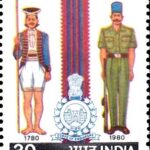
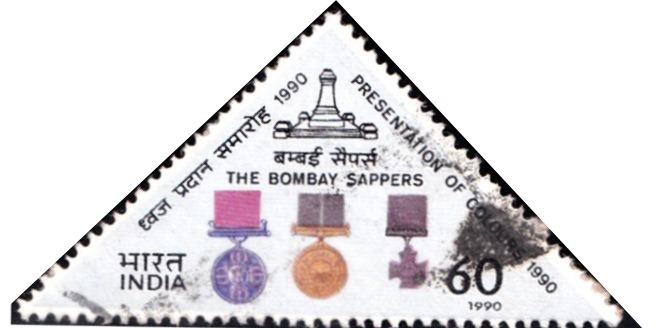

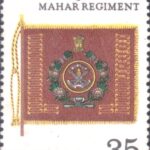
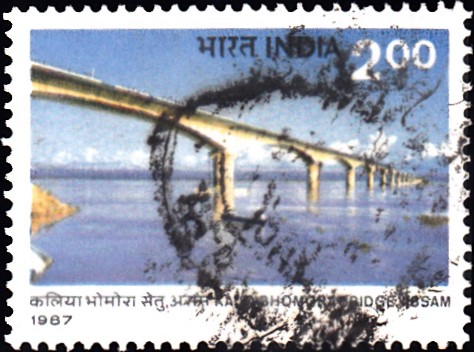
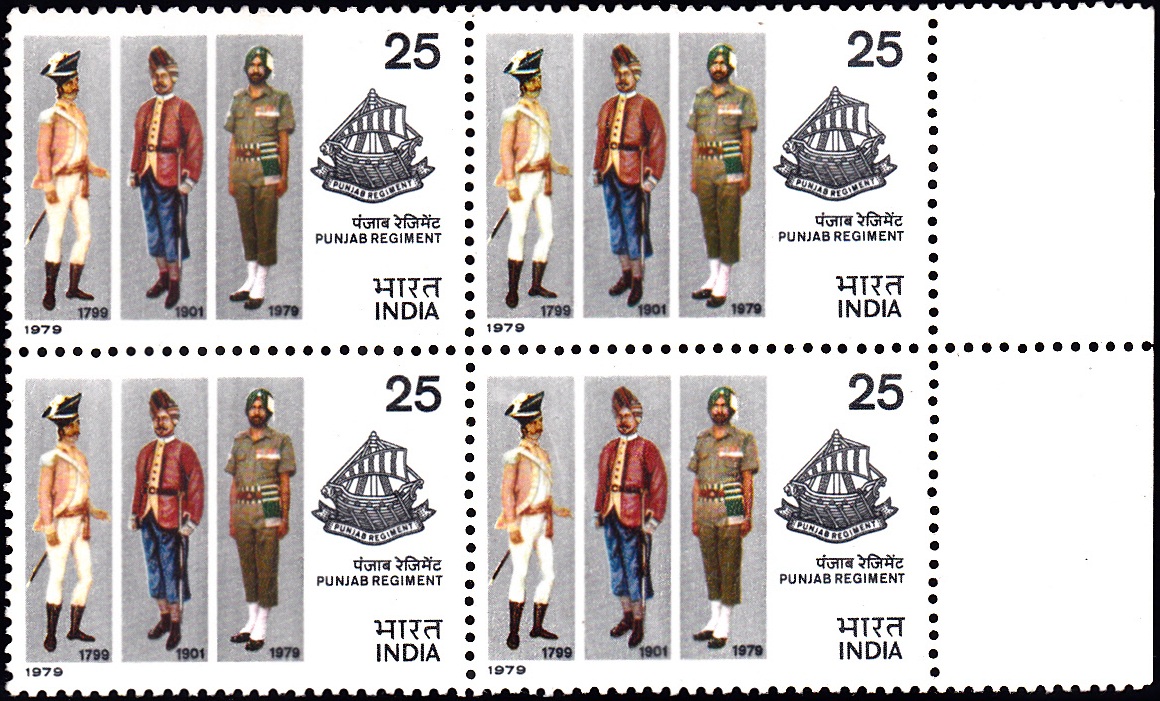
[…] Army Engineers, comprises three groups, “The Madras Engineer Group” (Bangalore), “The Bengal Engineer Group” (Roorkee), and “The Bombay Engineer Group” (Kirkee). Of these three the […]
[…] its birth to the waters of Mother Ganges. As early as the year 1845, Lieutenant Baird Smith of the Bengal Engineers, then Superintendent of the Eastern Jumna Canal, began training young Indians at Saharanpur in […]